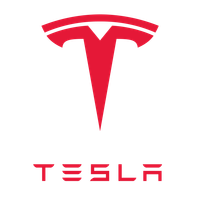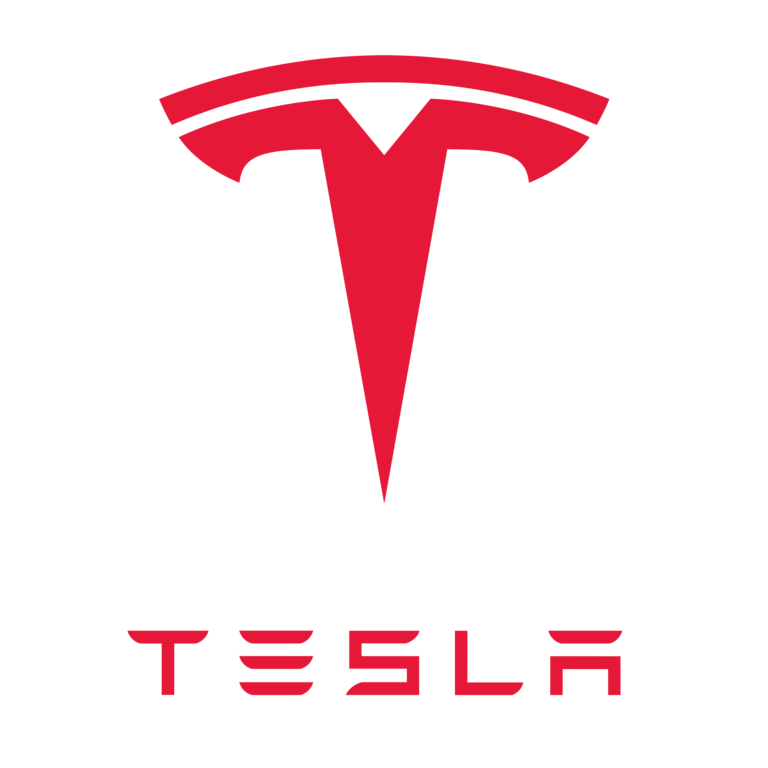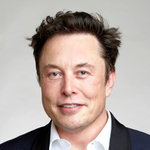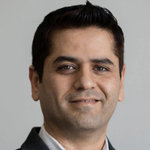
Tesla Inc
NASDAQ:TSLA


| US |

|
Johnson & Johnson
NYSE:JNJ
|
Pharmaceuticals
|
| US |

|
Berkshire Hathaway Inc
NYSE:BRK.A
|
Financial Services
|
| US |

|
Bank of America Corp
NYSE:BAC
|
Banking
|
| US |

|
Mastercard Inc
NYSE:MA
|
Technology
|
| US |

|
UnitedHealth Group Inc
NYSE:UNH
|
Health Care
|
| US |

|
Exxon Mobil Corp
NYSE:XOM
|
Energy
|
| US |

|
Pfizer Inc
NYSE:PFE
|
Pharmaceuticals
|
| US |

|
Palantir Technologies Inc
NYSE:PLTR
|
Technology
|
| US |

|
Nike Inc
NYSE:NKE
|
Textiles, Apparel & Luxury Goods
|
| US |

|
Visa Inc
NYSE:V
|
Technology
|
| CN |

|
Alibaba Group Holding Ltd
NYSE:BABA
|
Retail
|
| US |

|
3M Co
NYSE:MMM
|
Industrial Conglomerates
|
| US |

|
JPMorgan Chase & Co
NYSE:JPM
|
Banking
|
| US |

|
Coca-Cola Co
NYSE:KO
|
Beverages
|
| US |

|
Walmart Inc
NYSE:WMT
|
Retail
|
| US |

|
Verizon Communications Inc
NYSE:VZ
|
Telecommunication
|
Utilize notes to systematically review your investment decisions. By reflecting on past outcomes, you can discern effective strategies and identify those that underperformed. This continuous feedback loop enables you to adapt and refine your approach, optimizing for future success.
Each note serves as a learning point, offering insights into your decision-making processes. Over time, you'll accumulate a personalized database of knowledge, enhancing your ability to make informed decisions quickly and effectively.
With a comprehensive record of your investment history at your fingertips, you can compare current opportunities against past experiences. This not only bolsters your confidence but also ensures that each decision is grounded in a well-documented rationale.
Do you really want to delete this note?
This action cannot be undone.

| 52 Week Range |
142.05
479.86
|
| Price Target |
|
We'll email you a reminder when the closing price reaches USD.
Choose the stock you wish to monitor with a price alert.

|
Johnson & Johnson
NYSE:JNJ
|
US |

|
Berkshire Hathaway Inc
NYSE:BRK.A
|
US |

|
Bank of America Corp
NYSE:BAC
|
US |

|
Mastercard Inc
NYSE:MA
|
US |

|
UnitedHealth Group Inc
NYSE:UNH
|
US |

|
Exxon Mobil Corp
NYSE:XOM
|
US |

|
Pfizer Inc
NYSE:PFE
|
US |

|
Palantir Technologies Inc
NYSE:PLTR
|
US |

|
Nike Inc
NYSE:NKE
|
US |

|
Visa Inc
NYSE:V
|
US |

|
Alibaba Group Holding Ltd
NYSE:BABA
|
CN |

|
3M Co
NYSE:MMM
|
US |

|
JPMorgan Chase & Co
NYSE:JPM
|
US |

|
Coca-Cola Co
NYSE:KO
|
US |

|
Walmart Inc
NYSE:WMT
|
US |

|
Verizon Communications Inc
NYSE:VZ
|
US |
This alert will be permanently deleted.
 Tesla Inc
Tesla Inc
Tesla Inc



Tesla Inc., founded by Martin Eberhard and Marc Tarpenning in 2003 and later significantly shaped by Elon Musk, represents a transformative force in the automotive and energy sectors. What began as a niche startup, with an ambitious vision of creating electric cars accessible to the masses, has evolved into a multinational powerhouse. Tesla's key to success lies in its vertically integrated business model, which distinguishes it from traditional automakers. By keeping design, manufacturing, and even parts production largely in-house, Tesla not only reduces costs but also rapidly innovates. This model facilitates swift adaptation to new technological advancements and market demands, effectively condensing the typical automotive industry's lethargic timelines. Tesla's operations span across designing and producing electric vehicles—such as the Model S, Model 3, Model X, and Model Y—along with energy solutions including solar panels and energy storage products like the Powerwall and Powerpack.
Tesla's financial engine is driven primarily by its automotive sales, but it bolsters this with diverse revenue streams. In addition to selling vehicles outright, they offer leasing options, yielding recurring revenue. Another cornerstone is their software prowess, particularly in autonomous driving technology and vehicle connectivity, which continually attracts consumer interest and corporate partnerships. Tesla's Supercharger network—comprising an extensive array of fast-charging stations—encourages EV adoption, adding another dimension to their integrated ecosystem. Meanwhile, in the energy sector, Tesla deploys its solar and storage solutions to both residential and commercial clients, capitalizing on the global shift towards renewable energy. This comprehensive approach not only positions Tesla as a leader in sustainable innovation but also fortifies its financial stability through diverse and complementary income sources.

Tesla Inc., founded by Martin Eberhard and Marc Tarpenning in 2003 and later significantly shaped by Elon Musk, represents a transformative force in the automotive and energy sectors. What began as a niche startup, with an ambitious vision of creating electric cars accessible to the masses, has evolved into a multinational powerhouse. Tesla's key to success lies in its vertically integrated business model, which distinguishes it from traditional automakers. By keeping design, manufacturing, and even parts production largely in-house, Tesla not only reduces costs but also rapidly innovates. This model facilitates swift adaptation to new technological advancements and market demands, effectively condensing the typical automotive industry's lethargic timelines. Tesla's operations span across designing and producing electric vehicles—such as the Model S, Model 3, Model X, and Model Y—along with energy solutions including solar panels and energy storage products like the Powerwall and Powerpack.
Tesla's financial engine is driven primarily by its automotive sales, but it bolsters this with diverse revenue streams. In addition to selling vehicles outright, they offer leasing options, yielding recurring revenue. Another cornerstone is their software prowess, particularly in autonomous driving technology and vehicle connectivity, which continually attracts consumer interest and corporate partnerships. Tesla's Supercharger network—comprising an extensive array of fast-charging stations—encourages EV adoption, adding another dimension to their integrated ecosystem. Meanwhile, in the energy sector, Tesla deploys its solar and storage solutions to both residential and commercial clients, capitalizing on the global shift towards renewable energy. This comprehensive approach not only positions Tesla as a leader in sustainable innovation but also fortifies its financial stability through diverse and complementary income sources.
Earnings Calls
Management

Elon R. Musk is a prominent entrepreneur and business magnate known for his role as the CEO and product architect of Tesla Inc., a company that focuses on electric vehicles, energy storage, and sustainable energy solutions. Born on June 28, 1971, in Pretoria, South Africa, Musk displayed an early interest in technology and entrepreneurship. He moved to the United States to attend the University of Pennsylvania, where he earned degrees in both physics and economics. Musk founded or co-founded several successful ventures, beginning with Zip2, a web software company, which he sold for a significant profit. He then founded X.com, an online payment company that later became PayPal and was acquired by eBay. Musk's vision extends beyond Earth, with the founding of SpaceX in 2002, aiming to revolutionize space travel and achieve the long-term goal of making life multiplanetary. In 2004, Musk joined Tesla Motors, Inc. (now Tesla, Inc.) as chairman of the board and later became CEO and product architect. Under his leadership, Tesla has become a leader in the electric vehicle industry, with popular models like the Model S, Model 3, Model X, and Model Y. Musk has also been instrumental in the development of the Tesla Powerwall and Solar Roof, pushing the agenda of sustainable energy. Beyond Tesla, Musk is involved in several other ventures, including Neuralink, which focuses on brain-machine interfaces, and The Boring Company, which aims to revolutionize transportation through tunnel construction. His ambitious vision for the future often captures public imagination, and he is recognized for his innovative approaches and willingness to take risks in pursuit of transformative technologies.

Musk founded or co-founded several successful ventures, beginning with Zip2, a web software company, which he sold for a significant profit. He then founded X.com, an online payment company that later became PayPal and was acquired by eBay. Musk's vision extends beyond Earth, with the founding of SpaceX in 2002, aiming to revolutionize space travel and achieve the long-term goal of making life multiplanetary.
In 2004, Musk joined Tesla Motors, Inc. (now Tesla, Inc.) as chairman of the board and later became CEO and product architect. Under his leadership, Tesla has become a leader in the electric vehicle industry, with popular models like the Model S, Model 3, Model X, and Model Y. Musk has also been instrumental in the development of the Tesla Powerwall and Solar Roof, pushing the agenda of sustainable energy.
Beyond Tesla, Musk is involved in several other ventures, including Neuralink, which focuses on brain-machine interfaces, and The Boring Company, which aims to revolutionize transportation through tunnel construction. His ambitious vision for the future often captures public imagination, and he is recognized for his innovative approaches and willingness to take risks in pursuit of transformative technologies.

Vaibhav Taneja is a prominent executive at Tesla Inc., serving as the Chief Financial Officer (CFO) and joining the company in 2017. He has played a crucial role in the financial management and strategic operations of the company. Before becoming CFO in March 2021, Taneja served as Tesla's Chief Accounting Officer from 2019, overseeing the company’s accounting functions and financial reporting. Taneja's tenure at Tesla has been marked by his significant contributions to Tesla's global expansion and financial efficiency, supporting the company's rapid growth and sustainable profitability. His approach often emphasizes streamlining processes and leveraging technology to optimize Tesla's financial operations. Before joining Tesla, Vaibhav Taneja was associated with SolarCity Corporation, where he also focused on financial management and accounting functions. Earlier in his career, Taneja spent over a decade at PricewaterhouseCoopers (PwC), gaining valuable insights and experience in accounting and auditing, which laid the groundwork for his future roles in the corporate sector. Taneja holds a Bachelor of Commerce degree and is a qualified Chartered Accountant, bringing extensive expertise in financial management and strategic planning to his roles. His leadership style is often characterized by a focus on precision, efficiency, and a forward-thinking approach, aligning with Tesla's innovative ethos.

Taneja's tenure at Tesla has been marked by his significant contributions to Tesla's global expansion and financial efficiency, supporting the company's rapid growth and sustainable profitability. His approach often emphasizes streamlining processes and leveraging technology to optimize Tesla's financial operations.
Before joining Tesla, Vaibhav Taneja was associated with SolarCity Corporation, where he also focused on financial management and accounting functions. Earlier in his career, Taneja spent over a decade at PricewaterhouseCoopers (PwC), gaining valuable insights and experience in accounting and auditing, which laid the groundwork for his future roles in the corporate sector.
Taneja holds a Bachelor of Commerce degree and is a qualified Chartered Accountant, bringing extensive expertise in financial management and strategic planning to his roles. His leadership style is often characterized by a focus on precision, efficiency, and a forward-thinking approach, aligning with Tesla's innovative ethos.

As of now, there isn't publicly available detailed biographical information about a Mr. Xiaotong Zhu at Tesla Inc. If you are referring to a specific individual holding that name within the company, it might be that their profile is not widely covered in public records or media. Consider checking Tesla’s official announcements or reliable business news sources for the most recent updates on their executive team. If you have more context or details about Mr. Xiaotong Zhu's role or contributions, please feel free to share!

Franz von Holzhausen is an influential figure in the automotive design industry, renowned for his role at Tesla Inc. as the Chief Designer. He joined Tesla in 2008 and has been pivotal in shaping the design language that Tesla vehicles are now known for. Before his tenure at Tesla, von Holzhausen had an impressive career at other major automakers. Franz began his career at Volkswagen, where he worked on the design of the New Beetle. He then moved to General Motors, contributing to the Pontiac Solstice project. His skills and vision for innovative design led him to Mazda, where he served as the Director of Design from 2005 to 2008, playing a key role in developing the look for models like the Mazda Kabura and Mazda Furai. Since joining Tesla, Franz von Holzhausen has overseen the design of several key models, including the Tesla Model S, Model X, Model 3, Model Y, and the Cybertruck. His design philosophy emphasizes sleek, modern aesthetics combined with functionality, which has helped Tesla make a significant impact in the electric vehicle market. His work is known for a minimalist approach that maximizes efficiency and user experience, aligning with Tesla's innovative ethos. Franz's contribution to Tesla has been critical in positioning the company as a leader in electric vehicle design and innovation. Through his visionary work, he has not only influenced Tesla's product lineup but has also left a lasting mark on the wider automotive industry.
Franz began his career at Volkswagen, where he worked on the design of the New Beetle. He then moved to General Motors, contributing to the Pontiac Solstice project. His skills and vision for innovative design led him to Mazda, where he served as the Director of Design from 2005 to 2008, playing a key role in developing the look for models like the Mazda Kabura and Mazda Furai.
Since joining Tesla, Franz von Holzhausen has overseen the design of several key models, including the Tesla Model S, Model X, Model 3, Model Y, and the Cybertruck. His design philosophy emphasizes sleek, modern aesthetics combined with functionality, which has helped Tesla make a significant impact in the electric vehicle market. His work is known for a minimalist approach that maximizes efficiency and user experience, aligning with Tesla's innovative ethos.
Franz's contribution to Tesla has been critical in positioning the company as a leader in electric vehicle design and innovation. Through his visionary work, he has not only influenced Tesla's product lineup but has also left a lasting mark on the wider automotive industry.
As of my latest information, there is no prominent figure named Mr. John Walker associated with Tesla Inc. If there have been recent changes or developments involving a person by this name at Tesla, it is not within the data currently available to me. Therefore, it seems that John Walker is not a key executive or widely recognized individual related to Tesla Inc. If you are referring to a different context or if Mr. John Walker has recently become notable within Tesla Inc., please let me know so I can provide more specific information. Otherwise, my response would be "FALSE" regarding the existence of a widely recognized Tesla officer by that name.
If you are referring to a different context or if Mr. John Walker has recently become notable within Tesla Inc., please let me know so I can provide more specific information. Otherwise, my response would be "FALSE" regarding the existence of a widely recognized Tesla officer by that name.






























 You don't have any saved screeners yet
You don't have any saved screeners yet
